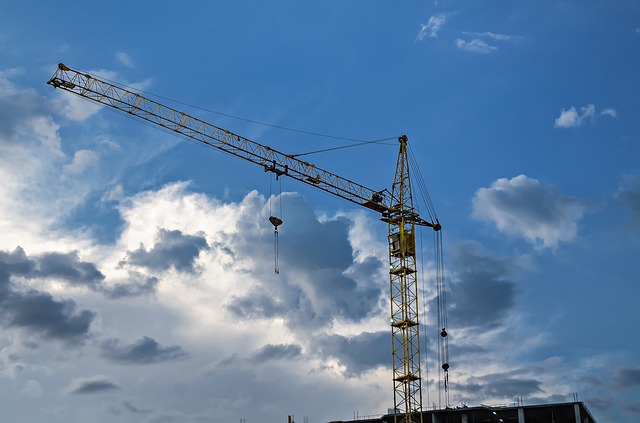Since tower cranes are slim compared with high-rise buildings, their boosting ability can be certainly taken too lightly based on their exterior, but truth is tower cranes enclose a complex and steady lifting and support system that serves as a pillar (no pun intended) in construction services to make the building process safer and more efficient.
Article Sponsor Fence Staining Plano

Parts of a Tower Crane
Tower cranes as a whole are established by three fundamental parts: the base, the mast or tower, and the swinging piece, arranged and defined in the following way:
- Base: The base is the main footing of the crane. It is connected to a big concrete foundation that endures the whole weight.
- Mast or Tower: The mast is interconnected to the base, and it is the supporting array that’s responsible for its height. The mast has a big triangulated medium construction, which presents the crane of its strength.
- Swinging Piece: The swinging piece encompasses a device and machine, linked to the peak of the mast, allowing the crane to shift by its position. In sequence, the swinging piece involves three parts:
- Jib or working arm: A horizontal piece that endures the mass, with a trolley that runs beside its extent to convey the shipment in and out.
- Machinery arm: A tinier horizontal constituent that grasps the load-lifting motor. It also includes automatic panels, the cable container, and concrete counterbalances to maintain stability.
- Operator’s cabin: Encompasses of the space in which the machinist leads all the jobs for the crane.

Specifications
Note: Tower cranes come in diverse models and from dissimilar producers, so their specifications might change depending on these factors. But their standard specifications are:
- Maximum unsupported height: 265 feet or 80 meters.
- Maximum reach: 230 feet or 70 meters.
- Maximum lifting power: 19.8 tons or 18 metric tons.
- Counterbalances: 20 tons or 16.3 metric tons.
Be aware that the greatest capacity is 18 metric tons, but the crane cannot raise that much heaviness when the weight is located at the edge of the jib. The nearer the weight is situated to the mast, the more weight the crane can boost securely. Machinists have two limit shifts to avoid overcapacity: a maximum weight adjustment to keep lower than 18 metric tons, and a maximum moment adjustment to guard the crane from the load’s bending strength.
Weather checking in construction spots is vital at all times, but particularly when tower cranes are in the middle. A strong blast of wind can disrupt the weight and assembly, producing a downfall. Project supervisors should regularly check weather forecasts, and evade boosting processes with opposed weather.
Support System
One of the principal questions that might be inquired by some people at the moment of observing tower cranes would possibly be about these assemblies’ erect stance. There are quite a lot of features that provide to the tower crane’s steadiness, like the concrete pad consisting of a concrete groundwork prepared by the building company some weeks earlier to the crane’s onset. Usual sizes for the pad are 30x30x4 feet (10x10x1.3 meters), with a mass of around 400.000 pounds. As well, some large anchor pins are profoundly fixed in the concrete pad, and these elements reinforce the base of the crane.
Thank you for visiting our site. If you have any comments or questions please feel free to contact us today. If you have any cool tips about cranes, please submit your tips. If we end up using your information on our site we will be sure to give you full credit. One last thing search google for Fence Staining Near Me to find your local Plano Fence Staining Company.
